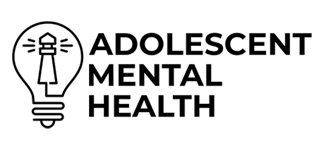Understanding the Stages of Addiction: A Comprehensive Guide
Addiction is a complex and progressive condition that affects individuals physically, mentally, and emotionally. It develops gradually, often taking over a person’s life before they realize the extent of the problem, with alcohol addiction being a significant issue many face. Understanding the stages of addiction is essential for identifying early warning signs and encouraging timely intervention. This detailed guide explores the five stages of addiction, highlighting the addiction cycle, substance use disorder, and the recovery process while offering actionable insights to overcome addiction.
What Are the Stages of Addiction?

The stages of addiction are a series of steps that describe how substance use evolves from casual experimentation into dependence and, eventually, addiction. These stages serve as a roadmap for understanding the progression of drug or alcohol addiction and for implementing effective interventions. The five stages include:
1. Initial Use
The first stage of addiction begins with initial use. This stage occurs when a person first experiments with drugs or alcohol, often due to peer pressure, curiosity, or a desire to manage pain, stress, or mental health issues. For some, this may involve drinking alcohol at social gatherings or trying a prescription drug. While seemingly benign, initial use can pave the way for more frequent usage, especially if the person begins using substances more regularly than they originally planned. Factors like family history, peer influence, and mental health challenges can heighten the risk during this stage.
2. Abuse Stage
The abuse stage marks a critical turning point in the addiction cycle. Here, the individual’s substance use becomes regular and begins to interfere with their daily life, often manifesting as alcohol abuse. Abuse may be fueled by the perceived positive effects of the substance, such as mood enhancement or pain relief, but it often leads to negative consequences. These may include deteriorating personal relationships, struggles with school performance, and the onset of mood swings or mental health issues. The abuse stage is often characterized by risky behaviors, such as driving under the influence or mixing substances, which can exacerbate the problem and lead to further dependence.
3. Tolerance and Dependence
As substance use continues, the body adapts, leading to tolerance—a need for higher doses to achieve the same effect. This is a key indicator of escalating drug dependence. At this stage, individuals may experience physical dependence, meaning they rely on the substance to function properly. Withdrawal symptoms, such as headaches, irritability, or nausea, occur if the substance is not used, reinforcing the cycle of substance use. Psychological dependence also develops, with the individual feeling compelled to use the substance to cope with stress, manage pain, or address emotional distress.
4. Addiction
Drug addiction, or substance use disorder, is a chronic condition marked by compulsive substance use despite significant negative consequences. By this stage, the individual’s brain chemistry has been altered, resulting in intense cravings and persistent addictive behaviors. Addiction often takes a toll on all aspects of life, including personal relationships, mental health, and physical well-being. The addiction cycle becomes self-perpetuating, as the individual prioritizes substance use over other responsibilities and experiences escalating personal and professional consequences.
5. Final Stage: Severe Substance Use Disorder
In the final stage, addiction becomes deeply entrenched, impacting every facet of the individual’s life. Experiencing 2-3 specific symptoms is classified as a mild substance use disorder, establishing a framework for understanding varying degrees of this mental health condition. Severe substance use disorder often manifests as a chronic mental health disorder, requiring intensive professional treatment. The individual may face severe withdrawal symptoms, health complications, and significant disruptions to their daily life. Breaking free from this stage typically requires a combination of detoxification, therapy, and ongoing support to rebuild and maintain sobriety.
The Addiction Cycle

The addiction cycle provides a framework for understanding how substance use develops into a full-blown addiction. The cycle typically includes:
Initial Use: Experimentation driven by curiosity or social factors.
Regular Use: Increased frequency of substance use.
Risky Use: Engaging in behaviors that endanger health or safety while under the influence.
Dependence: Reliance on the substance to function normally.
Addiction: Compulsive use despite adverse consequences, often characterized by drug or alcohol abuse as individuals repeatedly use substances to cope with issues.
Breaking the addiction cycle requires awareness, support, and professional intervention.
Warning Signs of Addiction
Recognizing the warning signs of addiction is key to early intervention. Common indicators of drug abuse include:
Physical dependence, marked by withdrawal symptoms when not using.
Intense cravings for drugs or alcohol.
Declining performance at school or work.
Strained personal relationships due to substance-related behaviors.
A noticeable inability to function properly without the substance.
Engagement in risky or harmful behaviors while under the influence.
Early identification of these signs can significantly improve outcomes by enabling timely intervention.
Treatment for Addiction

Addiction treatment is a multi-faceted process that combines medical care, therapy, and social support to address the root causes and effects of addiction. Effective treatment often includes:
Detoxification: This process involves safely managing withdrawal symptoms in a controlled environment, often under medical supervision.
Behavioral Therapy: Cognitive-behavioral therapy and other evidence-based approaches help individuals understand and address the underlying causes of their addiction.
Mental Health Services: Co-occurring mental health conditions, such as depression or anxiety, are treated alongside addiction. Research from the Substance Abuse and Mental Health Services Administration (SAMSHA) highlights the brain areas involved in the stages of the addiction cycle and the variability in its timeline.
Support Groups: Peer support groups, such as Alcoholics Anonymous, provide a sense of community and accountability during recovery.
Aftercare Programs: Ongoing support to help maintain sobriety and prevent relapse.
Treatment centers specializing in substance use disorder provide tailored programs to meet the unique needs of each individual, ensuring a comprehensive approach to recovery.
Conclusion
Understanding the stages of addiction is critical for recognizing the warning signs and seeking help. Addiction is a chronic condition, but recognizing substance abuse as a specific stage in the addiction cycle is crucial for timely intervention. By reaching out to treatment centers and mental health professionals, individuals can break free from the addiction cycle, rebuild their lives, and achieve lasting sobriety. If you or a loved one is struggling with substance use disorder, take the first step today by seeking professional guidance. With timely intervention, recovery is within reach.

FAQ's
The five stages of addiction include initial use, abuse, tolerance and dependence, addiction, and severe substance use disorder.
The 7 stages expand on the traditional model by including contemplation, preparation, action, maintenance, and potential relapse, which emphasize the psychological aspects of addiction and recovery.
The 4 levels of addiction often refer to use, misuse, abuse, and dependence, providing a simplified framework for understanding the progression of substance use.
These stages include precontemplation, contemplation, preparation, action, and maintenance, focusing on the psychological readiness to change and sustain recovery.









